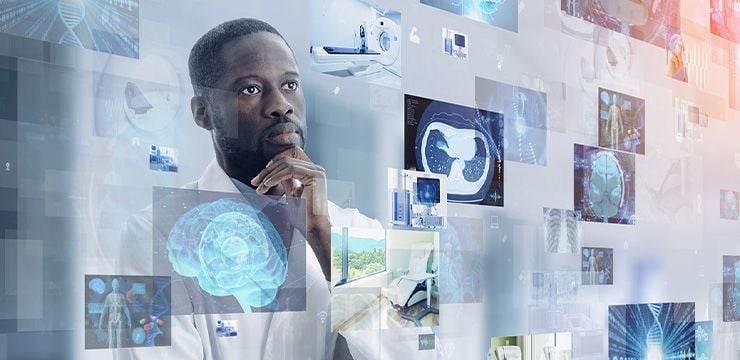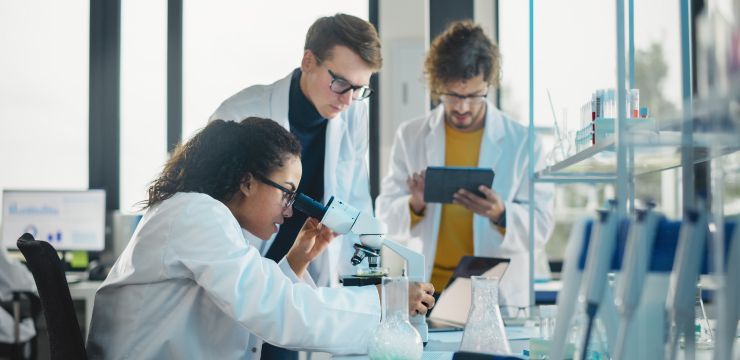Drug Development Process: How Long Does it Take to Develop a Drug?

According to the Center for Clinical and Translational Science, it is estimated only 5 of the 5,000 New Molecular Entities (NME) developed undergo clinical testing while just one among those five receive FDA approval. Additionally, it takes 12-15 years for a new drug to get approved in the US market. Hence, pharmaceutical companies are on a quest for an efficient drug development process — one that can isolate a drug molecule with a high probability of success and bring it from “bench to bedside” faster.
Now, the question is, how is that done? Here, we will delve into the stages and concepts of drug development in detail to help healthcare professionals design a robust R&D strategy that expedites the drug development and approval process.
What is the Drug Development Process?
The process of transforming a molecule from a drug candidate (the end-product of the discovery phase) into a product that has been given the green light for commercialization by the relevant regulatory authorities is known as drug development.
What are the Stages of the Drug Development Process?
There are five stages that complete the Drug Development Process.
Stage 1: Design and Development
In this stage, academic and industrial scientists work together to identify pharmacological molecules that have an effect on a particular biological target implicated in an illness. With the hopes of treating it, animal models and in vitro research are used for laboratory work. Design and development encompass the following steps that complete the entire process.
- Identification of the Target Compound
When designing a drug, it is essential to have a thorough understanding of the clinical spectrum of disease and the precise part a target plays in that condition. A therapeutic substance is selected based on its broad-spectrum applications and its ability to change its activity depending on a condition.
These pharmacological targets can be discovered in a variety of ways including reading published scientific literature, searching databases, or using practical techniques like target deconvolution and target discovery.
- Hit Identification and Validation
There are numerous screening techniques that can be applied to find a “hit” compound. A chemical that interacts with the desired target is referred to as a “hit.” High-throughput screening, phenotypic screening, virtual screening, fragment-based screening, and structure-based design are just a few of the methods that can be utilized to find “hits.”
- Hit-to-Lead (H2L) Maximization
At this point, the main objective is to improve a number of the most promising “hits” in order to produce candidates that are more powerful, selective, and have “optimal” pharmacokinetic features. The “initial hits” typically have a relatively low affinity for the biological target; researchers work to several orders of magnitude to boost the affinity.
As Artificial Intelligence (AI) technology develops, more and more pharmaceutical companies are realizing the benefits of adopting AI strategies. By adopting AI systems, they can enable researchers to gather large amounts of valuable biological, structural, and chemical data for faster H2L maximization.
- Candidate Selection
At this point, researchers decide which of the “high-quality” leads can be considered as a clinical candidate. A drug candidate must meet the following criteria to be suitable for preclinical and clinical testing: it must bind to the target selectively, interact with the target molecule to produce the desired functional response, and have sufficient bioavailability and bio-distribution to produce the desired response. In addition to the aforementioned characteristics, scientists also take into account the following factors: future manufacturing suitability, scale-up, and cost-effectiveness, since these impact a drug’s long-term success.
Stage 2: Preclinical Research
Before a drug candidate is tested on humans, preclinical testing is intended to provide crucial information regarding its efficacy and safety. The biological impact of a candidate is often demonstrated using both in vitro and in vivo models. The following queries are answered at this point:
- How does the medication affect the body?
- What happens to the medicine in the body?
- It might be potent, but is it safe?
Stage 3: Clinical Drug Development
Clinical trials are designed to provide specific scientific insights related to an investigational drug. The clinical trial study protocol denotes how the clinical trial needs to be carried out, and what guidelines need to be followed during the studies. It provides detail on key study objectives, study design, and statistical considerations, to ensure the safety of human participants involved in the trials. There are three phases of clinical trials (Phase I, II, III) and these differ from each other in their duration, the number of participants, and the purpose of the study.
Stage 4: FDA Review
When there is sufficient proof of the drug’s efficacy and safety to meet FDA requirements for marketing approval, a New Drug Application (NDA) is submitted by the sponsor/organization for review. Additionally, data from particular technical perspectives, such as chemistry, pharmacology, medical, biopharmaceutics, and statistics, must be included in the application for review. If the NDA is approved, the product can be marketed in the United States.
Stage 5: Post-Market Monitoring
Monitoring a medicine after it has been approved and is on the market is known as post-market safety surveillance. It is made to assess a drug’s long-term safety and effectiveness, potential formulation issues in “the real world,” and use for unapproved ailments or “off-label” (for example, use in an age group or at a dosage outside of that advised in the product label).
ALSO READ: How Technology is Opening Career Opportunities in Health Care
Drug Development Concepts
Let’s understand the basic terminologies related to the drug development concept.
-
Drug Master File
A Drug Master File (DMF) is a type of voluntarily submitted regulatory document from a company that is developing active pharmaceutical ingredients, drug products, and pharmaceutical packaging. DMF is not mandated by law or any other regulation. It is supplied voluntarily by the DMF holder to help their clients. DMFs are never authorized or disapproved. FDA only evaluates a DMF when an Active Pharmaceutical Ingredient (API) manufacturer uses it as a reference.
-
Drugs For Pediatric Use
Drugs for pediatric use consist of medication that is specifically designed for children. If an incorrect dosage of medication is given to a child, then it can lead to some serious side effects. There is a section titled “Pediatric Use” on the drug labels for prescription medications. It specifies whether the medication’s effects on children have been researched. Some examples include- antibiotics like Amoxicillin, Azithromycin, Cefdinir, and Cephalexin. Dosages of these medications are weight-based (in milligrams, micrograms, etc.) which allows for much safer drug administration.
-
Drugs For Veterinary Use
Drugs for veterinary use means medications specifically for animals. These drugs control bacterial infections and stop the spread of animal illnesses. Whether an animal species are raised for food production or not, veterinary drugs are used to maintain and/or improve its health. Penicillin, trimethoprim-sulfa, cephalexin, and enrofloxacin are some examples of drugs used for canines and felines. These medications reduce pain, swelling, inflammation, and fatigue.
-
Process Scale-Up Differences and Difficulties
Taking into account the concept of scaling up an industry, there can be seen several differences in terms of attitudes, approaches, methods, and heuristics. Considering difficulties, the pharmaceutical industry also witnesses issues with growth like any other sector. It involves –
- Lack of technical consensus
- Limited human resources
- Poor application of proven diffusion techniques
- Lack of engagement of local implementers and the adopting community
- Inadequate integration of research into scale-up efforts
How Long Does it Take to Develop a Drug?
There is no fixed timeline. However, from discovery to final approval, it could take 12 to 15 years or even longer. The new drug needs to pass the three clinical trial phases successfully before the final approval.
- Pre-clinical trials
- Clinical trials
- New drug application review
What Does it Take to Bring a New Medical Device or Pharmaceutical to Life?
Bringing a new medical device or pharmaceutical to life costs time and effort. But, it all depends on the type of medical device being created. Starting from developing to receiving clearance for a new medical device, it could take several months or even years. Considering past research, the process of taking a technology from conception to approval takes three to seven years.
Risks and Benefits of Developing a New Product in Healthcare
When a new healthcare product is introduced into the market, it can have both risks as well as benefits. There are technical risks, such as:
- Absence of proper bioassays
- Lack of selectivity toward the target
- Toxicity of the molecules produced
However, there are many positive points, which include:
- Growing understanding of medical issues
- Development of drug resistance
- Getting remedies for previously incurable diseases
Although this guide covers a maximum of topics related to the drug development process, there is a lot more to learn. To stay in step with healthcare careers, enroll in Emeritus’ online healthcare courses, and learn from the best to implement innovative R&D processes that reduce the time-to-market for new drugs.
Write to us at content@emeritus.org


















